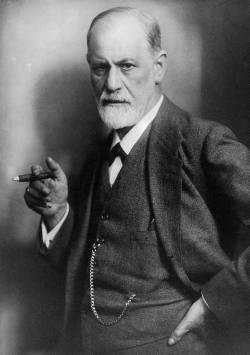The scientific study of dreams is called oneirology. Scientists believe that, in addition to humans, birds and other mammals also dream.
Hippocrates (469-399 BC) had a simple dream theory: during the day, the soul receives images; during the night, it produces images. Greek philosopher, Aristotle (384-322 BC) believed dreams caused physiological activity. He thought dreams could analyze illness and predict diseases. Marcus Tullius Cicero, for his part, believed that all dreams are produced by thoughts and conversations a dreamer had during the preceding days.

People have proposed many hypotheses about the functions of dreaming. Sigmund Freud (pictured on the right) postulated that dreams are the symbolic expression of frustrated desires that have been relegated to the unconscious mind, and he used dream interpretation in the form of psychoanalysis to uncover these desires. In The Interpretation of Dreams, Freud developed a psychological technique to interpret dreams and devised a series of guidelines to understand the symbols and motifs that appear in our dreams. Here is a link to a great site on dream interpretations, Dream Moods.
Certain processes in the cerebral cortex have been studied by John Allan Hobson and Robert McCarley. In their activation synthesis theory, for example, they propose that dreams are caused by the random firing of neurons in the cerebral cortex during the REM period. Neatly, this theory helps explain the irrationality of the mind during REM periods, as, according to this theory, the forebrain then creates a story in an attempt to reconcile and make sense of the nonsensical sensory information presented to it. Ergo, the odd nature of many dreams.
There are many other hypotheses about the function of dreams, including:
- Dreams allow the repressed parts of the mind to be satisfied through fantasy while keeping the conscious mind from thoughts that would suddenly cause one to awaken from shock.
- Freud suggested that bad dreams let the brain learn to gain control over emotions resulting from distressing experiences.
- Jung suggested that dreams may compensate for one-sided attitudes held in waking consciousness.
- Ferenczi proposed that the dream, when told, may communicate something that is not being said outright.
- Hartmann says dreams may function like psychotherapy, by "making connections in a safe place" and allowing the dreamer to integrate thoughts that may be dissociated during waking life.